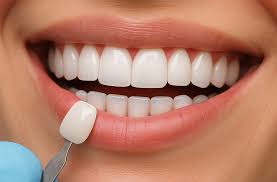
What is the Procedure for Porcelain Veneers?
Porcelain veneers are among the most elegant and effective cosmetic dental treatments for transforming your smile. These ultra-thin ceramic shells are bonded to the front surfaces of teeth, covering stains, gaps, chips, or slight misalignments while maintaining a natural look and feel. The journey to your new smile unfolds over several carefully planned steps—from consultation through final placement. Below is a clear, step-by-step outline of what patients can expect when getting porcelain veneers at a trusted dental practice.
1. Initial Consultation & Smile Planning
Your veneer process begins with a comprehensive consultation with your cosmetic dentist. During this visit:
- The dentist reviews your dental and medical history, examines your teeth, gums, and bite, and may take X-rays or 3D scans to assess the internal structure and bone health.
- It is essential to ensure your teeth and gums are healthy. Any underlying decay, gum disease, or structural issues must be addressed before veneers are considered.
- You and your dentist will discuss the goals of treatment: which teeth to veneer, desired shape, length, alignment, and color shade to harmonize with your natural teeth.
- A digital mock-up or wax-up model may be created, giving you a preview of how your veneers might look. This helps with communication and managing expectations.
Once you agree on the plan, the dentist schedules the next appointment for preparation.
2. Tooth Preparation & Enamel Reduction
To make room for the veneer material without making the teeth look bulky, a small amount of tooth structure—usually enamel—is removed from the front surface of each tooth that will receive a veneer.
- This enamel reduction often ranges between 0.3 mm to 0.5 mm, depending on how much change is needed in shape or color.
- Local anesthesia is commonly used to ensure patient comfort during this stage. Patients typically feel no pain once numb.
- The dentist may also shape transitional edges, open contacts between teeth if needed, and finish the margins carefully to avoid sharp “V” edges, which helps the lab fabricate better-fitting veneers.
The goal at this stage is to preserve as much natural enamel as possible, which is critical for strong bonding and long-term success.
3. Impression Taking & Shade Selection
Once the teeth are prepared, the next steps are:
- The dentist takes impressions or digital scans of the prepared teeth. These serve as molds and guide the laboratory in fabricating the veneers.
- The selected shade for the veneers is carefully matched to your adjacent natural teeth. The dentist uses a shade guide and sometimes takes photos under proper lighting to ensure accurate color blending.
- Occasionally, additional impressions or intraoral scans may be taken to refine details and ensure that the veneers will fit precisely.
If needed, temporary veneers may be placed at this time to protect the prepared teeth and help you preview the aesthetics while the final veneers are being fabricated.
4. Laboratory Fabrication
Your impressions or scans are sent to a dental laboratory, where skilled ceramic technicians custom-craft each porcelain veneer. The lab work includes:
- Sculpting the veneers to match the contour, shape, and translucency of your natural teeth, while accommodating the design requested by both you and the dentist.
- Firing the porcelain in a kiln to harden it and develop its strength.
- Final polishing and finishing of margins and surfaces to ensure a smooth, lifelike appearance.
This fabrication process generally takes 1–2 weeks (sometimes longer, depending on the lab and complexity).
5. Veneer Try-in & Final Bonding
When your custom porcelain veneers are ready, you return to the dental office for the final placement:
- The dentist first removes the temporary veneers (if any) and cleans the prepared tooth surfaces.
- A mild acid etching gel is applied to the enamel surface (for about 20 seconds or less), slightly roughening it microscopically to enhance bonding strength.
- A bonding agent (resin adhesive) is applied both to the tooth and the inner surface of the veneer.
- The veneer is carefully positioned on the tooth and excess cement is removed. A special curing light is used to harden (polymerize) the adhesive, securely fixing the veneer in place.
- The dentist checks your bite (occlusion), makes fine adjustments, polishes margins, and ensures everything is comfortable and properly aligned.
Once the veneers are bonded, your beautiful new smile is revealed.
6. Aftercare, Follow-Up, and Longevity
Following placement, some sensitivity to hot or cold is common for a few days but typically subsides on its own.
To maintain your veneers:
- Practice good oral hygiene: brush with a nonabrasive toothpaste, floss daily, and attend regular dental cleanings and checkups.
- Avoid biting or chewing excessively hard items (like ice, nuts, or opening packages) that can chip or damage veneers.
- If you grind or clench your teeth (bruxism), your dentist may recommend a night guard to protect the veneers.
- Monitor your veneers over time. Though porcelain veneers are quite durable, they may need replacement or repair if they chip or if a tooth underneath develops decay.
With proper care, high-quality porcelain veneers can last 10 to 15 years or more, giving you a long-lasting, stunning smile makeover.
Summary
The procedure for porcelain veneers is a carefully orchestrated process that blends science, artistry, and precision. It begins with diagnosis, planning, and mock-ups; proceeds through enamel preparation, impressions, and temporary veneers; moves on to laboratory fabrication; and culminates in the final bonding and finishing. Post-procedure care and regular monitoring ensure that your investment in a radiant smile pays off for years to come. At Gentle Care Family Dental, our goal is to make this journey smooth, transparent, and tailored to your needs.


